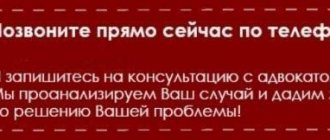Hooliganism, or a gross violation of public order, expressing obvious disrespect for society, is a crime that occurs quite often in Russia. Thus, according to the Ministry of Internal Affairs of the Russian Federation , in 2022 more than 2 thousand such crimes were registered in our country, and more than half of them remained unsolved. It is noteworthy that criminal liability for hooliganism in its current criminal legal understanding has existed for more than 90 years, although the composition of this crime and the sanctions for it, of course, have undergone changes many times, and the term itself goes back to the times of Russian Pravda.
Let's consider the composition of simple hooliganism under Part 1 of Article 213 of the Criminal Code of the Russian Federation (that is, an act that does not contain aggravating circumstances):
- Objective side: a gross violation of public order, demonstrating obvious disrespect for society (the culprit violates generally accepted norms and rules of behavior, wanting to oppose himself to society, to demonstrate his negative attitude towards it). To qualify the actions of the perpetrator as hooliganism, the law requires the presence of the necessary characteristics: the person must use weapons (objects as weapons), or must be guided by motives of intolerance towards a particular social group, or the act must be committed on public transport.
In the absence of at least one of the three above-mentioned qualifying signs, if hooligan actions involve obscene language or destruction or damage to property, the actions of the person who committed such actions fall under the signs of petty hooliganism in accordance with Art. 20.1 Code of Administrative Offenses of the Russian Federation.
- Object: public order, normal functioning of public institutions.
- Subjective side: direct intent, hooligan motive.
- Subject: a sane person who has reached the age of 16.
The article “Hooliganism” also has qualified clauses. So, aggravating features are:
- commission of an act by a group of entities (organized group of individuals);
- resisting a government official trying to stop a violation;
- the perpetrator's use of explosives or devices.
Corpus delicti
- Subjective side
. It differs mainly in that there is direct intent in the actions, as well as the desire of the accused to show opposition in his actions, to oppose himself to society. Often, hooligan actions contradict various kinds of norms established in society - moral, ethical, etc. If the actions are proven to obey only the personal motives of the offender, then the crime can no longer be classified as hooliganism. Accordingly, the proceedings will take place under a different article. - Objective side
. From the objective side, the actions committed within the framework of the crime and their characteristics are considered. First of all, actions must be active and involve violations of the established public order. These actions are usually accompanied by violence and outright disrespect for society and its rules.
The subject of hooliganism is an individual who has already reached the age of 14 years. Both public order and the inviolability of an individual person become the object of the crime.
What does it mean not to be allowed to work based on the results of a medical examination?
If a doctor, during a medical examination, reveals contraindications to the employee’s performance of work functions, he is obliged to notify the employer about this. The latter, in turn, must not allow the employee to work and issue an appropriate order about this (according to the norms of Article 76 of the Labor Code of the Russian Federation).
Read more about the removal of employees from performing their duties in the material “Removal from work under the Labor Code of the Russian Federation - procedure and grounds .
How does the Criminal Code of the Russian Federation interpret it?
Dear readers! Our articles talk about typical ways to resolve legal issues, but each case is unique. If you want to find out how to solve your particular problem, call:
8 Moscow8 St. Petersburg
or if it’s more convenient for you, use the online consultant form!
All consultations with lawyers are free.
The object of the crime is public order, which is characterized by the norms adopted in each specific state.
A potentially dangerous act directed against one or more members of society using weapons or any objects that can harm human health is characterized as hooliganism.
It is important to know: a group action is an aggravating circumstance.
It is necessary to separate the meanings: the action of a group during hooliganism (Article 213 of the Criminal Code of Russia) and the creation of mass riots by a crowd (Article 212 of the Criminal Code of the Russian Federation).
Article 213 contains 3 points that characterize the crime as responsibility increases:
- Neglect of moral principles accepted in the state in relation to a stranger or group of people with the use or threat of using weapons.
- Similar actions performed by a group, with pre-agreed actions. Also resistance to government officials trying to stop the crime.
- The use of explosives during socially dangerous acts.
If suddenly you didn’t already know, then we advise you to read the article on liability for knowingly false denunciation (Article 306 of the Criminal Code of the Russian Federation).
Comments on 213 and examples
Due to the prevalence of the problem, Art. 213 of the Criminal Code is the subject of intense judicial practice and mandatory comments.
The distinction between independent action and hooligan motives as a sign is brought to lower courts by regional courts and the Supreme Court of the Russian Federation.
According to the explanations of the Plenum of the Supreme Court, set out in Resolution No. 45 of 2007, even the use of a toy gun constitutes an event under Article 213 of the Criminal Code. The Resolution also contains an explanation that the use of real weapons, including homemade structures, entails additional imputation under Art. 222 of the Criminal Code, if there is illegal possession of these funds.
The resolution contains an indication of the difference between a criminal offense and a minor administrative offense of the same name and an order to the courts, in the absence of circumstances that allow establishing a criminal act, to qualify the act according to the Code of Administrative Offences.
Thus, in 2010, the Kozmodemyansk City Court of the Republic of Mari El convicted under Art. 213 of the Criminal Code of citizen Loskutov, who fired from an air rifle from the balcony of his apartment and aimed at the forearm of the woman below. Obviously, an air gun is not the kind of thing to charge 222, but the one to charge 213.
Alcohol intoxication is not necessary for a misdemeanor to occur, but if the offender was drunk, this may be considered an aggravating circumstance. In many cases, alcohol is a companion to breaking the law.
Insult is an administrative offense, and therefore does not in any way affect the qualification of a criminal offense.
In practice, sentences for Article 213 regularly include the following accompanying charges:
- 317th (attack on the life of a law enforcement officer);
- 318th (violence against a government official);
- 319 (insulting a government official).
Article 213 does not apply if the police initially suppressed a minor violation (20.1 of the Administrative Code), which led to a criminal encroachment on the management order.
Reasons for committing a crime against public order
The offense has reasons:
- disagreement with the political views of the victims;
- different ideology;
- racial rejection of the rights of people of different skin color;
- hatred of people of other religions;
- hostility towards representatives of different nationalities;
- belonging to a hostile group.
At the same time, the following signs are not characteristic of hooliganism:
- preliminary acquaintance with the injured party;
- crime planning;
- personal material interest.
If the offense contains at least one similar sign, then classifying the act as hooliganism is a wrong conclusion.
What is hooliganism under the law?
To suppress unrest, the Russian legislator established liability under Article 213 of the Criminal Code. Domestic jurisprudence classifies hooliganism as a moderately dangerous offense.
In the original version of 1996, the Criminal Code defined hooliganism as a gross violation of public order, while the use of violence or a clear plausible intention to use it, as well as damage or complete destruction of property, was considered mandatory. However, in 2003, the article for hooliganism of the Criminal Code of the Russian Federation underwent changes: the mandatory condition of violence or damage to property disappeared, what remained was clear disrespect for society, which must be accompanied by two signs: the use of weapons or the motive of hatred towards any group of people.
Depending on how many people participated in hooliganism (one person or more), the first or second part of the article applies.
In the new edition, a feature of the crime was an additional qualification - with the use of explosives. When publishing new editions of the Criminal Code, the publisher usually prints a table of changes, so we can find those editions in which the introduction of a new norm was indicated.
The legal concept of an object used as a weapon may include a bat, a stick, a chain, etc. (see below).
A schoolchild who “hooligans” in the entrance with a lighter, a restless neighbor from an adjacent apartment who brings home noisy companies, are not criminals within the meaning of Article 213, if they do not use weapons and do not express hatred towards any social group.
The formal sign of a crime is not yet sufficient for imputation if there is no public danger. If a person deliberately violates the norms of behavior and does this in one of the ways listed in the Criminal Code, the punishment can reach 8 years in a colony. (The regime is chosen by the judge taking into account recidivism and other circumstances.)
Article 213 of the Criminal Code has a similar norm - “petty hooliganism” in the Code of Administrative Offenses.
The differences between criminal and administrative torts are as follows:
- a minor event poses little danger to society;
- a minor event does not have the mandatory characteristics prescribed in the Criminal Code.
The difference between these two violations of the law is also stated in the Resolution of the Plenum of the Supreme Court (see below)
Starting from 2022, bills to change the norm have not yet received positive feedback from experts and the legal scientific community, so the structure of the article as a whole has become established. In the future, it is expected that practice will accumulate and be processed by scientists and higher courts.
An object
It is order in society. It can be considered as a complex, a system of interactions between people, the rules of their behavior, social life, established in regulations, customs, morals, and traditions. Public order is the established social state of the population, ensuring an environment of calm, inviolability and security of the individual, integrity of property, stable functioning of various institutions (state and social). An additional object of encroachment may be the health, dignity, and honor of persons, including those suppressing violations.
Arbitrage practice
The criminal legal characteristic of hooliganism is a violation of order. Judicial practice is extensive.
Examples of cases:
- Citizen E. was in the main square on City Day. He drank a lot, tried to attract attention to himself, first by shouting towards the presenters, but then he climbed onto the stage and began to insult everyone in public. The police grabbed him and took him away, but on the way he tried to escape and resisted. For this he was brought before the court. He received a fine for his hooligan behavior.
- Citizen V., being drunk, wanted to take revenge on her ex-husband, took a knife and went to threaten him. She screamed under his windows, woke up the whole house, and then slashed the car tires. For this she was arrested and tried under articles for hooliganism and damage to property. She received 2 years probation and a fine.
- Citizen Z. quarreled with a girl and began to look for a way to take revenge on her. He found out that she was in the park with a friend, went there and began to publicly insult her. She did not react, then he approached her and grabbed her by the hair, dragging her along the asphalt. As a result, the girl had significant skin lesions. Z. was arrested and investigated. He appeared before the court soon and received 3 years of probation and forced labor.
What decisions are made under Article 213?
Penalties for hooliganism vary from fines to arrest. In 2022, there were 719 cases under this article, of which 563 were under the first part. As a result, 185 people were arrested, 349 received suspended imprisonment, 1 received restriction of freedom, 27 received a fine, 50 received correctional labor, and 92 received mandatory sentences. 27 were declared insane.
What are aggravating and mitigating circumstances?
The article considers malicious hooliganism to be a crime that will severely violate public order. This is an aggravating circumstance. It can also include conspiracy, an organized group, resistance to authority, and the use of explosives.
Punishment
The legal literacy of the population is increasing every year thanks to global computerization and the Internet. Despite this, many young people often underestimate their actions in relation to maintaining public order, and hooliganism is considered a frivolous legal term. However, the punishment can be quite serious in the form of a significant fine or imprisonment.
For a simple crime, including the serious motives listed above, the same sanction framework is provided, within which the following is awarded:
· fine of 300-500 thousand rubles, commensurate with the minimum subsistence level for 3 years
· compulsory work up to 480 hours
Corrective labor for a period of at least 1 year and up to 2 years
· forced labor or imprisonment for up to 5 years.
In case of malicious hooliganism, the fine increases to 1 million rubles, and the term of imprisonment increases to 7 years.
Comments on Article 213
The article “For hooliganism” of the Criminal Code of the Russian Federation, and what it threatens, is described in 3 parts. The main object is order in society, the additional object is human health and property.
Comments:
- The objective side is a violation of order, disrespect for society, accompanied by the use of weapons or objects as weapons.
- Place of occurrence - public places, transport, sparsely populated or deserted (apartment, forest).
- Signs of hooliganism are the use of weapons or objects for use as weapons, disrespect for society. It is they who distinguish criminal hooliganism from petty hooliganism, accompanied by the destruction or damage of other people's property (administrative liability).
- Public order is a system of rules of behavior established by law and customs. Gross violation - causing significant damage to the interests of society, the individual, a malicious violation of morality. This is a disturbance of the peace, blows, public insult or mockery of one or more persons, desecration of recreational facilities, disruption of an event.
Clear disrespect is manifested in actions against any person. Actions are motivated not by personal hostility, but by the desire for a public demonstration of disregard for norms.
Weapons are devices or objects designed to hit a target or send signals. It is divided into firearms, cold, and gas. Items used in the form of weapons are knives, axes, stones, sticks. It does not matter whether they were specifically designed to cause harm (sharpening points, bats, bicycle chains, heavy bottles).
The use or attempt to use weapons also covers cases where their use poses a threat to life. Attempted use is not only real actions when they are aimed at causing harm, but also when their use poses a threat to life. The mere fact of having a weapon is not grounds for liability under this article.
If hooliganism involves causing death or serious harm, then the crime is classified under 105 or 111 articles. A combination with hooliganism is possible when there is a real combination of crimes - hooligan acts are committed along with murder. The subjective side is intentionality. The subject realizes that he is disturbing the order.
Hooliganism does not include insults, beatings, mild or moderate harm to health, committed against acquaintances, relatives, colleagues, motivated by personal hostility. Such actions become hooliganism if, along with the direct intent to cause harm, there is an intent to disrupt order. The perpetrator does not have a specific goal, but understands that this is inevitable and treats the consequences with indifference, which is disrespectful to society.
Subject is a sane person over 16 years of age. In the second part he may be over 14 years old. In Part 2, aggravating circumstances are: conspiracy of a group of persons, organization of a group, resistance to a representative of authority or a representative of order. Resistance is disobedience to the legal demands of a person to refuse to stop his actions, as well as active opposition.
Providing resistance with the use of violence is covered by Part 2 of the article and does not require additional qualifications under Article 318. If violence is dangerous to the life of a representative of the authorities, then Part 2 of Art. 318 is applied. Criminal Code of the Russian Federation. Part 1 of the article describes a crime of medium gravity, while Part 2 describes a serious crime.
Providing resistance
It is understood as active opposition to persons performing official/public duty. Providing resistance involves deliberate behavior aimed at overcoming the lawful actions of these citizens. In the case of the use of violence, both non-dangerous and life-threatening to a representative of the authorities, the acts are qualified according to a set of norms (under Article 213 and the corresponding part of 318 or 317 norms). A similar rule applies when the perpetrators cause grievous or moderate harm to health, as well as in cases of murder.
Specifics of the attack
The social danger of acts for which Article 213 establishes liability lies in the fact that when committing crimes, the rights of citizens to dignity, health, honor, their peace of mind, normal conditions of rest and work, life may be violated, the interests of institutions, enterprises, transport and etc. Assault consists of gross disrespect for society, accompanied by the use of any weapon/objects that replace it, or committed for certain reasons. These signs are mandatory. If a violation of order is committed without the use of special means or in the absence of the motives specified in the norm, the provisions of the Code of Administrative Offenses are applied, and not Article 213. The Russian Federation is a rule of law state, the legislation of which clearly differentiates misdemeanors and crimes. If there are no signs of a criminal act in a person’s behavior, then his behavior is considered an administrative violation. Accordingly, the punishment will be less severe.
Qualification Features
Article 213 does not contain such an objective element as the use of violence. In this regard, if, during a violation of order, the victim was beaten or harmed to health of one degree or another, the act is qualified according to a set of norms. In case of intentional damage/destruction of property belonging to another citizen for hooligan reasons and resulting in significant damage, Art. 167 (second part). Moreover, if the culprit violates order, shows disrespect for society using weapons, his behavior is additionally qualified under Article 213.
Kinds
Article 213 of the Criminal Code of Russia characterizes the main types of crime:
- In a domestic crime, hooliganism is carried out with the use of weapons and other objects that are used to beat a person.
- The extremist type is distinguished by the presence of a motive for the crime, based on ideological, racial, national, and religious hatred.
- The mixed type, which has common characteristics, poses the greatest danger due to its unpredictability.
There are subjective and objective reasons that led to the commission of hooliganism.
Objective characteristics:
- a gross violation of the norms of public order accepted in the state. Deliberate violation of the human right to rest at night, rest, preservation of health and life. Committing a crime in a public place;
- opposing oneself to the laws of society, disrespecting and failing to comply with them;
- use of violence against strangers, threat of violence;
- destruction or damage to property not belonging to the hooligan.
The subjective reasons for the manifestation of hooliganism are the offender’s disregard for the rules of public life, impunity for displaying cruelty, arrogance, and outright rudeness. Clear disrespect for moral standards and society is the main sign and danger of a crime.
Investigation methodology
According to Article 213 of the Criminal Code of the Russian Federation, hooliganism must necessarily be accompanied by one of the qualifying signs, otherwise it is considered minor (administrative).
Domestic violence, beating of family members excludes the tort under consideration, since Art. 213 of the Criminal Code provides for an act that encroaches on public order. It occurs when a criminal begins to beat people previously unknown to him simply out of a desire to break the law.
If the fight arose from personal hostility, there will also be no 213th, because the subject of the attack is the personality of the victim, and not the order in a public place. This circumstance allows the lawyer to successfully reclassify Art. 213 at station 115.
If there was long-standing hostility between the accused and the victim, we can make an unambiguous conclusion about the absence of the 213th. If hostile relations arose as a result of an accidental conflict, then there will also be no composition. But if a suspect in one evening staged several independent episodes of attacking people unfamiliar to him, this is an obvious sign of a crime that grossly violates the rules of behavior in society and falls under Art. 213 CC.
Classification of a general concept into an independent crime and into a sign as part of another crime allows you to correctly determine the composition.
During the preliminary investigation, depending on the type of crime, it is necessary to record:
- weapon (item) used for the crime;
- explosive substance or explosive device;
- slogans shouted by criminals;
- number of criminals;
- place of occurrence - transport and infrastructure;
- fact of opposition to persons ensuring law and order.
In the latter case, law enforcement officials mean not only police officers, but also security guards, vigilantes, watchmen, duty officers and ordinary citizens who tried to bring the hooligans to reason.
Thanks to the widespread development of video surveillance systems, illegal actions of hooligans in public places are recorded by video cameras. Since information storage devices tend to overwrite video files after some time, you should receive copies of the files at the very beginning of checking the message, highly preferably in the presence of witnesses.
Confiscation from a suspect of an object that can be used against health (brass knuckles, batons, pipe cuttings) does not yet give rise to a crime. However, if such an object was used to create a threat, and was not even used to inflict beatings or destroy things, this already gives rise to the 213th offense.
Also, the presence of a group of people at the scene of the incident does not mean a composition under Part 2, since only one person can commit specific criminal actions, the rest are nearby, but do not violate the law. In this case, he will be held liable under Part 1. If only one of the hooligans had a weapon, this also does not allow the participants in the incident to be charged with Part 2.
A more serious act - mass riots - is provided for in Art. 212 CC. It encroaches on the very stability of the social order. Since the presumption of innocence requires that any doubt be interpreted in favor of the accused, then if the intent to participate in mass riots is not proven, the accused can only be charged with 213.
In 2010, the Zimovnikovsky District Court of the Rostov Region considered the case of football fans Kamenev and Fedoseyev, who used a traumatic pistol and a hunting rifle in a fight with other fans. They were convicted under Part 2 of Art. 213 of the Criminal Code to suspended sentences. It was possible to prove the facts and their guilt thanks to the seizure of a pistol and a rifle.
In such conflicts between destructive social groups, victims may shy away from testifying. In this case, they must be warned that avoiding giving evidence entails liability in accordance with Art. 308 of the Criminal Code. It should not be difficult for the interrogator or investigator to convince the victim that it is necessary to bring the criminal to justice so that he does not attack other people.
If the suspect refuses to testify on the basis of Art. 51 of the Constitution of the Russian Federation, it is necessary to establish his participation in the events with the help of witness testimony. Thanks to the development of social networks, the search for eyewitnesses of an incident is becoming easier, since eyewitnesses can be found using advertisements in social networking groups, collected according to the principle of belonging to a locality or area of a large city.
Is time spent on a medical examination included in working hours?
If medical examinations are required daily (every shift), the time spent completing them is included in working hours. In accordance with the procedure for conducting medical examinations, the employer needs to approve:
- lists of professions and persons for whom such examinations are mandatory;
- scope of medical examination (tests for drugs and alcohol, blood pressure measurement, external examination, express tests);
- internal company regulations for such inspections (at the beginning of the shift, at the beginning and end of the shift).
In other cases, the provisions of Art.
185 Labor Code of the Russian Federation. According to them, for the time spent by employees undergoing mandatory inspection, they retain their average earnings at work. You can find more complete information on the topic in ConsultantPlus. Free trial access to the system for 2 days.
External manifestation of the offense and its object, Art. 20.1 Code of Administrative Offenses
In petty hooliganism, the object is order in society. What does it mean? The objective side is considered to be the commission by a person of an unlawful act that violates the peace of citizens and public order. For example, obscene language in a public place. Petty hooliganism can disrupt order in society in any area of life. This could be an institution, street, store, factory, etc. Simply put, the commission of an offense most often occurs in the presence of people.
To have it, it is not enough to commit it publicly. For example, petty hooliganism is also an obscene inscription on a fence made in the absence of people.
Objective part
Article 213 establishes punishment for gross violation of order for certain reasons or using special means. When characterizing an act, it is necessary to study the place, time, method of action, duration, intensity and other circumstances. Violations can be directed at a specific person or at an indefinite number of persons. Article 213 contains such an evaluative concept as obvious disrespect. This sign characterizes the inner essence of the behavior of the culprit. Clear disrespect is usually expressed in the deliberate failure to comply with generally accepted rules and moral standards. As a rule, in such situations, the perpetrator opposes himself to others, demonstrating a disdainful attitude and showing brute force.
Aggravating circumstances
In Part 2, the qualifying criteria are the commission of a crime by previously agreed entities/organized group or when resisting a government employee or another citizen performing duties related to maintaining order or suppressing violations. In the first case, you must be guided by Art. 35 (second part). It is necessary to take into account that the preliminary conspiracy must concern not only the commission of hooligan acts together, but also the use of weapons or objects acting as weapons or for the reasons specified in Article 213.
What is hooliganism
- . This includes the most harmless and low-risk actions. Statistics show that these crimes are most often committed by teenagers. This crime, for example, includes quarrelsome language with others (and sometimes among themselves), harassment of third parties, etc. The main basis for interpreting certain actions of this type is a real violation of public order, that is, there should be complaints from people that they are being disturbed by certain persons. Based on the results of the investigation of the case, the accused are assigned administrative responsibility.
- Criminal hooliganism
. These actions are also distinguished by the fact that they violate public order, however, unlike small ones, they are more dangerous, can be carried out by an organized gang and cause real harm to dozens of people. Very often, such hooliganism encroaches on public safety, which determines such serious responsibility for committing this.
Please note that different types of hooliganism will be punished under different legislative documents. Thus, petty hooliganism is regulated through the Administrative Code, and “major” hooliganism is regulated through the Criminal Code.
.
Summary of the case:
The criminal prosecution against my client and other participants was terminated due to the lack of corpus delicti, that is, under paragraph 2 of Part 1 of Art. 24 Code of Criminal Procedure of the Russian Federation.
PS The explanations of the courts given in this article make it possible to correctly assess the situation for the presence of the crime in question and implement them during the defense in similar situations. By the way, there is a lot of judicial practice on hooliganism, and this composition is not simple from the point of view of proof, and accordingly there are maneuvers for the defense.









